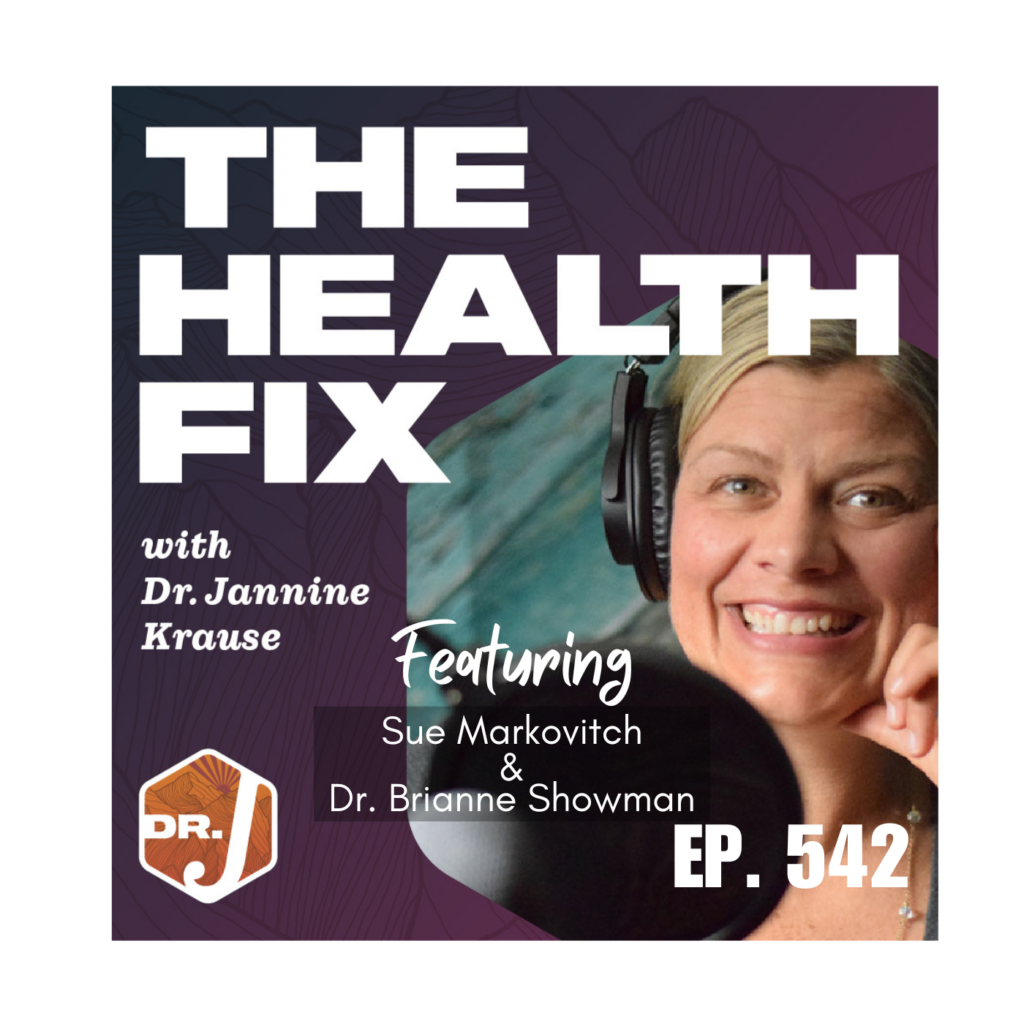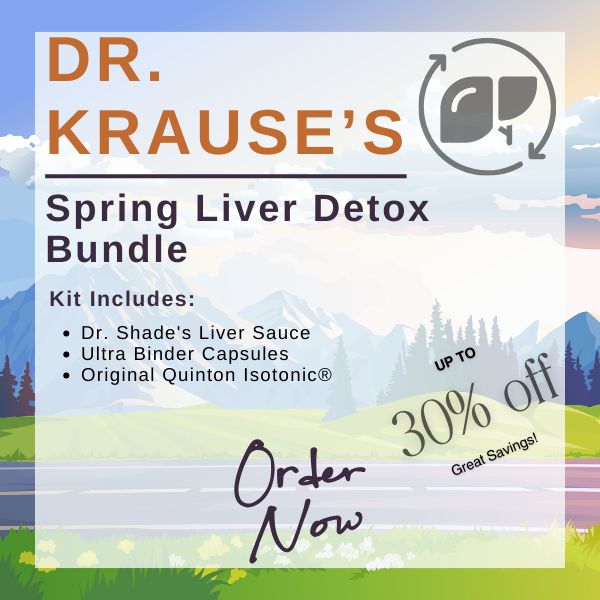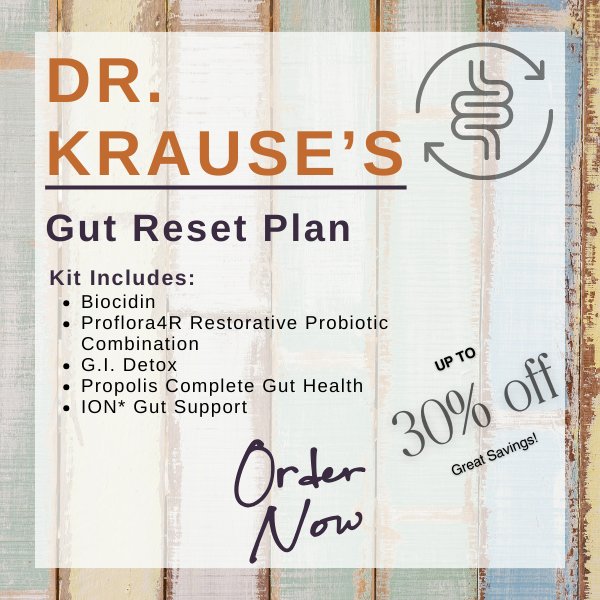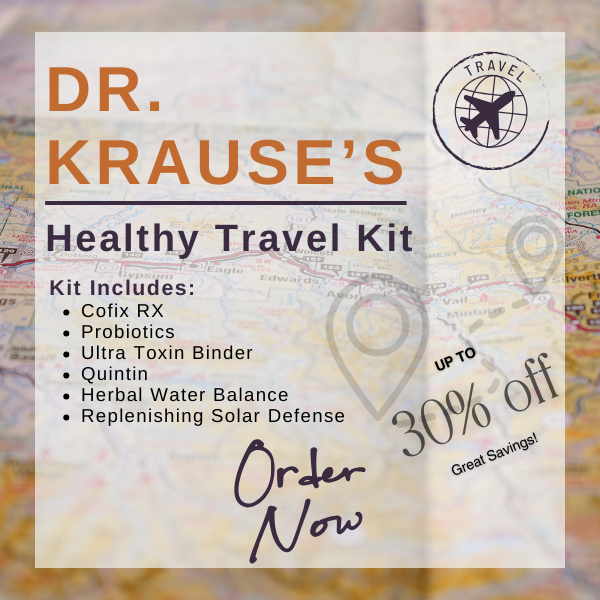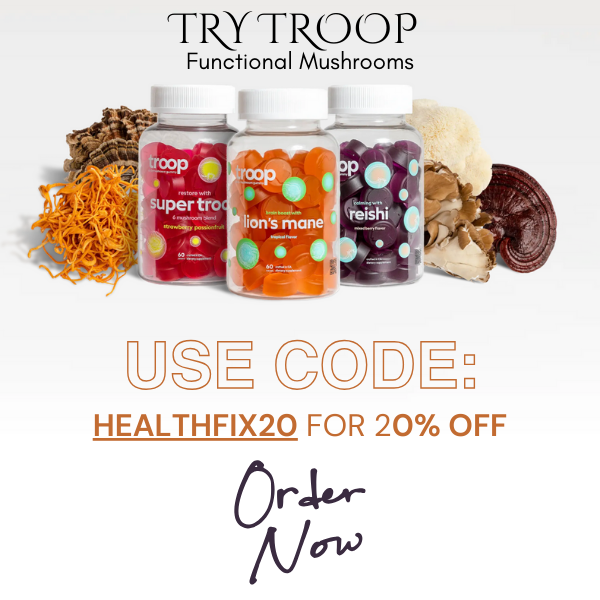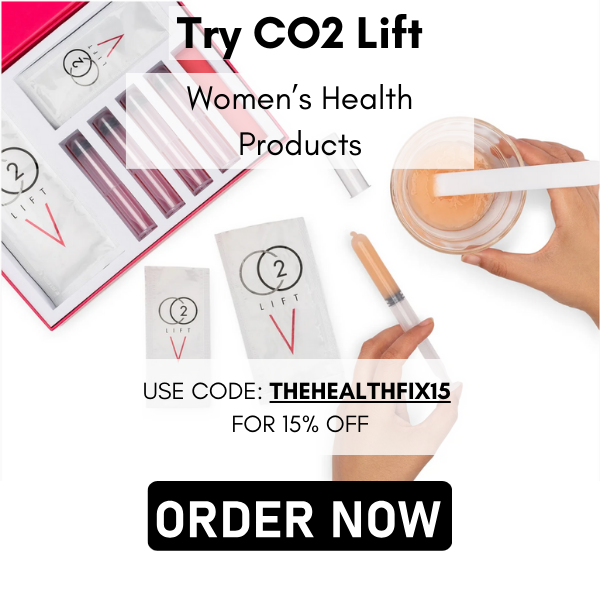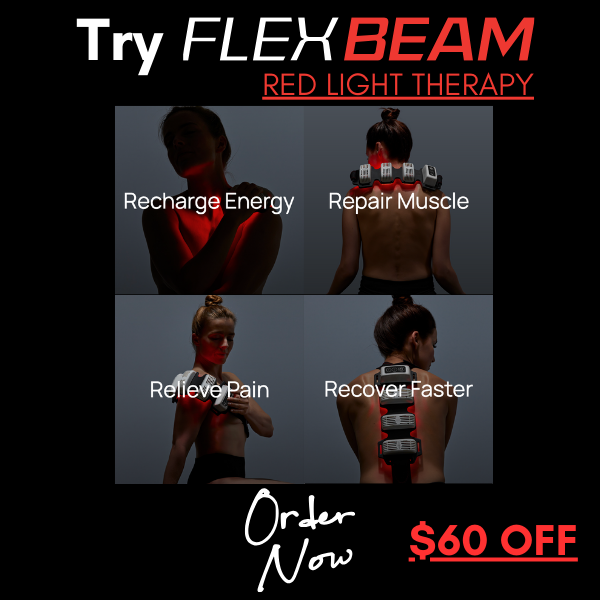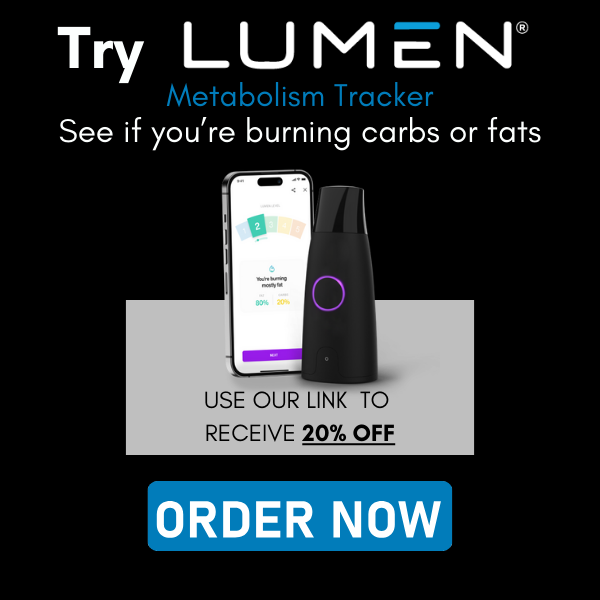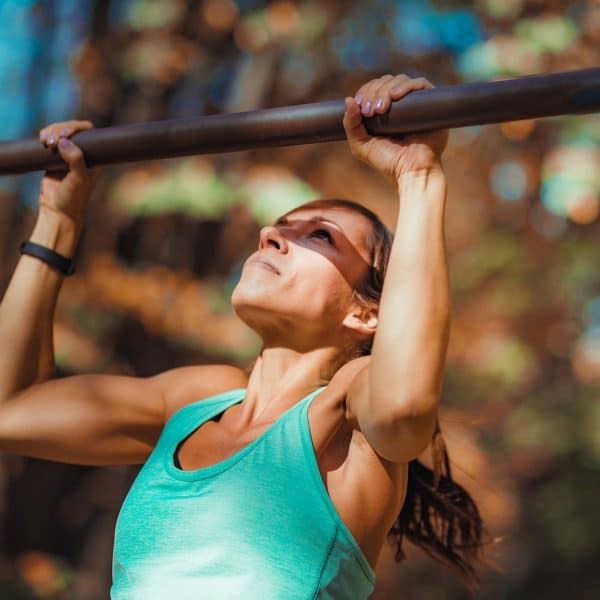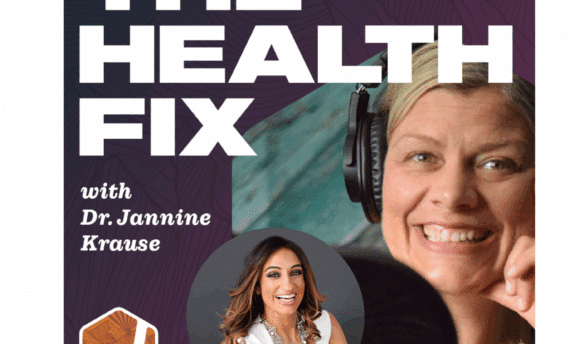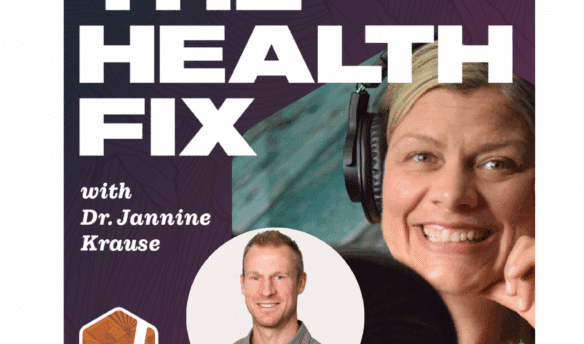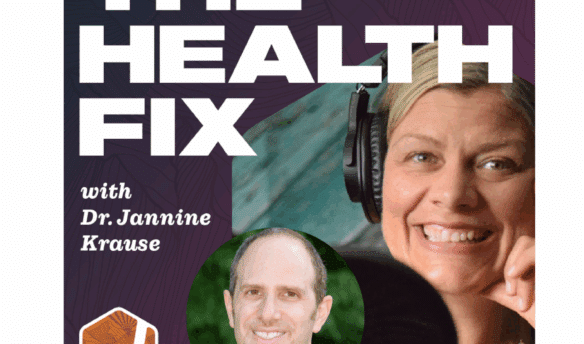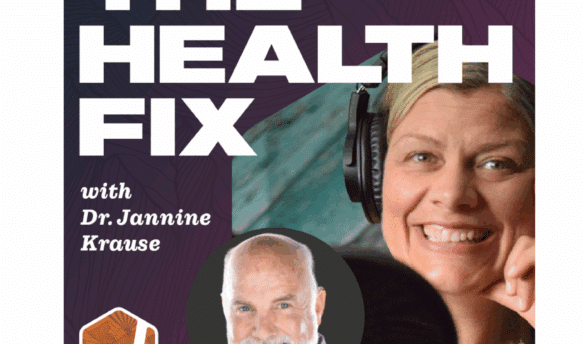In this episode of The Health Fix Podcast, I’m joined by Sue Markovitch, a personal trainer specializing in women over 40, and Dr. Brianne Showman, a doctor of physical therapy. We dive deep into recovery after injury and surgery, exploring Sue’s hip replacement journey and how Bri helped her regain strength and mobility to get back to her favorite activity—hiking!
From post-workout soreness to fear around pain, we unpack the physical and mental aspects of recovery and share key strategies to bounce back stronger.
Dr. Krause’s Protocols
Instructions Included
Traveling soon? Looking to detox or reset your gut? Try one of Dr. Krause’s Fullscript plans.
🔥 What You’ll Learn in This Episode:
✅ Sue’s hip replacement experience despite normal hip density
✅ How Dr. Brianne supported Sue’s rehab journey
✅ Why your body remembers past injuries and how they affect movement patterns
✅ The importance of researching your healthcare and rehab team
✅ How to prepare your body for surgery to optimize recovery
✅ Why walking mechanics and fixing movement compensations are crucial post-surgery
✅ The role of fear in injury recovery and how to move past it
✅ Why avoiding certain movements can lead to muscle imbalances
✅ Supplements & electrolytes to support workout and surgery recovery
🔗 Resources from the Show:
💪 Sue Markovitch – Personal Training for Women 40+ – suemarkovitch.com
🩺 Dr. Brianne Showman – Modern Physical Therapy Clinic – getmodernmedicine.com
🔔 Subscribe for More Health Fixes!
👍 If you found this episode helpful, like & share it with someone who needs it!
Our Partners
Podcast Transcript
1:19 – Intro
9:51 – Can you avoid trouble with your hips by doing mobility routines
12:15 – The connection between feet and hips
22:32 – Past injuries showing up later in life
23:44 – Having a strong core
28:03 – Pre and post surgery
34:27 – Good pain vs. bad pain
38:16 – Sweating
40:19 – Post workout soreness
47:57 – Where to find everybody online
[Preview] I no longer start with the physical part.
I start talking them through the fear.
Tell me how you’re feeling,
’cause I can usually see it or sense it in them.
I’m afraid this is never gonna get better.
I’m afraid this is the way it is.
And I can really relate to that now
after this experience I’ve had for the last two years.
I understand the fear behind these injuries.
What if it doesn’t get better?
– We start getting pains like, oh, just go away.
And we just kind of let it go and it never goes away.
And then we just start, rather than going to get help for it,
we just start avoiding those movements.
– Mm-hmm.
– And long-term, what happens when we do that
is the body learns this movement,
we’ll go with shoulder, we’ll go with reaching overhead
that should be normal, used to be normal.
The body’s now like, oh, that’s not safe.
So we’re kind of, that’s when we got into get stuck
in this pain cycle of, well, I’ve avoided it for so long.
Now that I’m getting it back,
because I’ve gone to therapy or I am going to therapy
or been working on my own or whatever.
We’re getting it back, but it still hurts
because the body has now learned this is a bad movement.
It’s a dangerous movement.
[Intro] Welcome to The Health Fix Podcast
where health junkies get their weekly fix of tips, tools
and techniques to have limitless energy,
sharp minds and fit, physiques or life.
– Hey Health Junkies, on this episode
of the HealthFix Podcast,
I have a trio going on.
I’ve got Sue Markovich, who’s a specialized personal trainer
for women over 40, and Brianne Showman,
she’s a doctor of physical therapy,
and they are a fun bunch because the two of them
are actually working together.
So Dr. Brianne Showman is the doctor of physical therapy
for Sue Markovich and they’re working on rehabbing her hip.
So I thought it’d be really fun to bring them on
and chat about how Sue’s hip replacement
letter to Dr. Brianne Shuman and how they’re working together.
But not only that, we’re going to talk about all things fitness and how sweating plays
into the game.
We’re going to talk about post-workout soreness.
We’re going to talk about fear around pain.
We’re going to talk about what if things don’t get better.
What do we do?
We’re going to talk about supplements.
We’re going to talk about electrolytes.
We’re also going to get into how the body remembers incidents from the past.
We’re going to talk about how important it is to research your care team, especially
if you’re going to have surgery and you’re thinking about not only the doctor that’s
doing the surgery, but who’s going to get you ready for it and who’s going to rehab
you after it?
So many things here that are nuggets for anyone over 40 who’s wanting to stay fit for life,
but not only that, thinking about how to manage inner juries and maybe you’re looking at some
kind of surgery.
This podcast is for you because you’re going to hear a real life perspective from the three
of us. All right. Let’s reintroduce you to Sue and Dr. Brienne Showman because they’ve
both been on my podcast before. I guarantee you’re going to like this one. It’s a fun one. I love
chatting with ladies like this. All right. Let’s get on with the podcast. Hey, y’all junkies. I have
another trio podcast on today. And today I’ve got Sue Markovich and I’ve got Dr. Brienne Showman on
and we’re going to be talking about injuries and what to be thinking about to one, prevent them.
And two, if you have one, what to do over 40 because things change.
I bet both of these ladies are going to tell us a little bit of what changes in
the body as we get injured over 40.
So let’s have them introduce themselves to you.
And since I have you guys screen configured, we’re sues up here on the top.
Let’s have Sue go first.
Hi, I’m Sue Markovich.
Uh, I’m a personal trainer for women over 40 and I am currently injured and rehabilitating.
So that’s kind of my, my current situation.
Awesome.
Good.
It’s going to be good feedback for us today to learn a little bit more and
your experience too, because that’s really what I want folks to hear.
Now, brianne, tell us where you’re at, what you’re doing and give folks the
scoop of how the two of you are connected here.
Yeah.
I’m Brianne Schulman.
I am a physical therapist in Arizona.
And I am actually Sue’s therapist for the injury she is rehabbing, which is
fun because I love to have therapists and client on because
now we can get both stories. Plus, for a lot of people, you
know, we only hear the one side of the story where like us
docs are talking about I have this client who had this
experience. And it’s just one sided. So I figured we’ll bring
all of us together because gosh, injuries, they’re so
common. I’m seeing more and more women, especially as
estrogen declines, we’re rolling ankles, shoulders are
getting frozen. And in Sue’s case, we’ve got a hip. So Sue,
tell us what happened with the hip?
Like how did this play out?
Well, I was hiking all over Arizona and I started having this hip pain anterior, so
front of my hip and kind of down the front of the leg.
And so I started, you know, the process started to maybe see an ortho.
I tried some PT.
I did some dry needling.
I just sort of threw everything at it that I could think of.
I was 57 at the time and it was really hard to hear that this is arthritis, your bone on
bone and you’re going to need a hip replacement.
But that’s really where I was.
But I wanted to make sure I got everything I could done before I went into surgery.
Yeah.
Yeah.
So it’s just osteoarthritis.
I’m almost 20 years postmenopause.
So no estrogen.
And the problem started when I went in for the surgery and they fractured my greater
trochanter accidentally during the surgery.
So that was two years ago this month.
So that’s what happened.
Man, did you know if you had low bone density before going?
I knew that I did not.
I’ve had my bone density scan done.
I have normal hip density, had it tested, especially since I was, you know, went through menopause
so early.
So it was, it was nothing to do with me.
It was just a small percentage chance complication and it happened to me.
Oh, accidental.
Man, Bri, do you hear that?
Pretty like, do you see a lot of folks who have had that happen?
No, Sue’s actually the first one that I worked with with it.
Yeah.
– It’s very rare.
– Yeah, yeah.
Oh, I am so sorry.
That sucks, that sucks.
I think a lot of people, you know, as we get older,
we start to realize that things are bone on bone,
knees, hips, you know, and it sometimes gets to the point
where we do have that decision to make.
Like, do we go for a replacement?
Do we not?
What can I ask you kind of what was going through your mind
when you’re like, “Do I do this?
“Do I not?”
Because I think a lot of people can benefit from hearing
because you were so active, you know,
what went through your mind thinking this through
as to like, do I make this decision, do I not?
– Well, surgery is a big decision.
That’s why I wanted to go through some steps
before I got there.
You know, I was familiar with some of the modalities already.
I just thought, I’m gonna try some things,
make sure this isn’t just some sort of radical imbalance
that’s going on in there pulling my joint out of alignment.
And I would go in and it would feel so much better,
by the next day it was right back to that bone on bone pain. So after several months of that,
it started to sink in a little more like, “Okay, I need the surgery. Now let’s, you know,
go through that process, find a surgeon, get things set up, and do it that way.”
I actually didn’t have a lot of fear before that first surgery. I just thought, “All right,
I’m healthy, I’m fit. Let’s do this. Everybody says hips are the easiest one. I’ll be back up
to what I’m doing in six weeks. No problem. Let’s go.
So this is the part where I go. All right, Bri, tell us what you’ve seen on your end because
it’s true. You hear the stories like same with me. I’ve seen a couple of my folks. They’ve had
the hip replacement and then like they’re up and walking. They’re good to go. You know, minor
recovery and boom, they’re back out. And then there are a couple of folks that I’ve seen where
not so great. So, Bri, give us your, give us a scoop on like the hips and what you’ve
seen over the years in terms of us 40, 40 years and older and kind of how people have
fared and how you help folks make a decision too because I know obviously you’re in that
position as well sometimes.
Yeah. Um, as far as hips go, they aren’t. I’ll say it’s probably the least frequently
seen joint with pain. A lot of knees, a lot of shoulders, a lot of backs, that sort of
thing. With that said, a lot of hip immobility and tightness and weakness and all the things
create a lot of our low back pain, create a lot of our knee pain. And so typically when
I’m seeing anyone for a knee or low back, I’m assessing the hips and I’m seeing really
tight hips, I’m seeing really weak hips. And so it’s an area that we don’t necessarily
get a lot of pain in as frequently as some of our other joints, but we tend to have a lot of issues
there without us realizing it that are creating a lot of our other pains.
Great comment because I definitely will see that too when I do a little bit of mobility assessments
on my folks just having someone try to do a squat or try to do a lunge or just swinging the leg
can be, you know, just like, whoa, okay. Do you think, you know, and and so this isn’t meant to
like make things sound like, Oh, she didn’t stretch or do her, you know, mobility work, it’s not like
that. Do you think that a lot of people could avoid trouble with the hip if they do work on the
mobility aspect of the hip? What’s your opinion? I think so. I mean, like, like you said, Sue was
probably doing all the things and so not everyone and so 100%
going to prove that a lot of things. But I think so, even
just seeing like myself included, but a lot of patients,
myself just working on hip mobility can totally clear up
knee pain and things like that. And so a lot of times just
starting to work on that mobility can clear up a lot of
things that we don’t realize is, you know, that it’s impacting
it.
Yeah, yeah. And I see Sue nodding. So she’s like, yeah,
What do you like if we go back to you for a second to like when you were hiking when you know it’s not like our age range like any of us,
you know, 40 plus we weren’t, you know, there were stretch stretch stretch, but we didn’t really learn about mobility.
I don’t think they started really talking about it for about maybe 10 years ago, maybe maybe 15, 10 years ago, you know, so it wasn’t really a thing.
Were you were you doing any mobility work at all?
So with with your situation, did you know to do it?
Did you start at a certain age and then just was too late?
What do you think?
I feel like, well, before I was a hiker, I was a runner.
Okay.
And I’m not sure I was an excellent form runner.
I just really loved it.
And I ended up doing long distance running,
done nine marathons, I’ve done 35 halves, you know.
And I can guarantee you, I wasn’t doing hip strengthening
exercises for like glute med and things like that the way
I should have to support that kind of running.
I just didn’t understand that fully at the time.
Also, hip mobility and things like that
started to come into the fitness world
right around the middle of my running.
So if I was doing damage to my hips, I’d already done it.
I just think it was a bit of a combination for me,
but I’m sure that I wasn’t consciously
doing the things I needed to do to support my hip strength
through all that running.
Yeah.
Yeah.
I mean, I think that’s super common.
And especially our age ranges, like we just weren’t taught that.
And a lot of people, you know, are still stuck on all I just need to
stretch more, but my hamstrings just never loosen up, you know, kind of a
thing. I’m sure pre years this all the time, you know, and then the other
side of it too. And I don’t know if this that you experienced this too,
or, and Bree, I’m sure you can talk about it because you love working on
those feet. Planter, fasciitis.
I see it so often.
And then I go up and poke on the hips and see the strength of the hips and
it’s weak or weak and excessively tight.
Let’s hear your take on that, Bri.
I wanna hear about it.
(laughing)
– Yes, there’s a lot of interplay between the hip
and the foot and ankle.
Typically, if one isn’t working right,
the other one’s not gonna work right,
and it works both directions.
So if that foot’s super weak,
we’re not gonna get proper glute activation.
If we’re not getting good glute activation,
we are gonna have the good foot control.
So they do work together and kind of back and forth.
But just kind of thinking mechanically, in order to kind of keep our foot into a good
arch position, we need that glute-mead glute max to activate.
In order to get ourselves in, in order to get into our toe-off position, which is going
to activate our glutes better, we need that hip extension.
So we don’t have our hip extension, nationally we aren’t going to get those glutes firing
like they need to.
piggyback on that if our foot is collapsing in because you don’t have good control of it,
we aren’t going to get the glued activation that we intend to when we’re doing any sort of single
leg activity, including running or any of your like single leg RDL, single leg balance, all your
single leg things. So there’s there is such a an interaction, correlation, co-contraction between
those two areas that we really do need to address, you know, both of them simultaneously. And so
It is pretty common for us to find really weak hips with weak feet and also just kind of go into
because I know a lot of you hear a lot of people talk about especially in social media world is
like blue damnnesia and that sort of thing. In my opinion, it’s more of you’re not like you can
put someone on the table measure hip strength. It can be great. You put them standing and they
and they don’t know what to do.
It’s the body not knowing mechanically
how to use it properly.
It’s not the fact that it does notify her.
If they lay on their back,
they can do a glute set, they’re a glute so fire.
It’s fine.
It’s a matter of getting that foot in a position
and training the body how to actually fire those glutes
when they’re being used.
– No, so key.
So key, and I think a lot of people don’t think about that,
that we’re, like we’re feeling our world through our feet.
And if we don’t know how to move from there,
that’s a biggie.
And so many cues over the years just from weightlifting,
I’m sure you’ve had that too, where you’re like,
oh my gosh, my one foot’s doing this,
my other one’s doing that.
So, Sue, in being a trainer,
I’m curious with working with your clients
now that you’ve had Bri kind of working with you
and you kind of learning, you know,
the fitness, realm of things,
are you catching a lot of folks in their mobility,
kind of doing a little bit of interesting things
with their feet or balance,
or even just watching the hips.
Are you seeing a lot of stuff coming up for folks?
– Yes, especially as my clientele age.
So, yeah.
As I learned things through my own injury
and client’s injuries,
I actually then tried to build those physical therapy ideas
into my workouts.
So one of the first things I learned was actually
with upper body, that upper cross,
where the shoulders around it forward,
the pecs are tight. So I thought, you know what, we’re not going to work as many pecs.
We don’t need that. Let’s really focus on rows, three times as many rows as anything
else. And I just started building it in and explaining to people, you know, we’re just
trying to maintain that posture. Now that I understand the hips so much better, I’m
trying to do the same. So everyone’s doing their clam shells and, you know, things like
that just as preventative and to strengthen up those hips. We’ve already, we’ve always
done a lot of balance. Something everyone asks for balance, posture, you know, just the
things that you start to feel like you’re losing as you age or that are causing your
problems or pain as you age. Those are often what are asked for in personal training.
Have you seen that too, Bri? Like people are asking for balance, posture, that kind of
stuff as they get older too? Or are you having to kind of wrestle that out of them? Because
I’m imagining sometimes we have different clients, how, because with PT, we’ve got folks
that sometimes have injuries, but for you two folks that look and improve their life.
And so I’m curious, like, what’s the differential between the two industries because I know a
lot of people just go to PT because they still have it stuck in their head that their hips
not connected to their knee connected to their foot.
Like somehow that Bojengel song did not click.
I would say like I think Sue and other trainers get the I need help and I get the I don’t know
what’s wrong with me um because typically when we’re getting shoulder neck upper back low back
all those things it’s education on posture and why that’s important why the core is important and
um like balance wise a lot of times people are just like oh my balance is just bad like
Not I need to work on it, not anything like that. It’s just I just my balance is about isn’t gone on either foot like
All right, well, let’s do something about that. So it’s really interesting my perspective because most people it’s like their balance is crappy
They don’t really like they know it’s crappy, but they don’t know they need to do anything about it
All right. Oh my gosh as you bring that up. I think about balance
I also think about like my main reason like if people were to really ask me and like nail it down like
like to the nitty-gritty of why I lift weights,
why I stay fit, literally so if I’m traveling.
And I end up in a place like rural Turkey,
this happened to me when I was a teenager,
rural Turkey, the bathrooms off the highway
are stalls with holes in the ground.
And like I literally thought, I looked at my friend
and said, did they take the toilets out?
Like is this a broken bathroom?
She’s like, no, this is a bathroom.
like, God, but it hit me ever since then.
I’m like, I asked her, I’m like, what do older women do who can’t squat over a whole?
She said, I have no clue.
I have no clue what they do.
I’m like, if I’m traveling, if I’m going to be traveling, I need to, I need to have
this ability because you could you imagine if you can’t balance maybe your, maybe
your, your glute muscles and your hamstring and your, and your quads and your whole
legs are not very strong and you can’t balance and you got to try to get over a whole.
You don’t want to fall in what’s down there.
What do you do?
So, you know, for me, that was like a big,
and I was like probably 17 at the time,
and I was like, I will never lose my clue strength ever.
So I’m curious about the two of you.
Would you ever hit a point and feel free
whoever wants to speak up first?
Ever heard of point where like, this is why I do this?
Maybe saw a client, maybe you had an experience.
I’m super curious if you guys have stories
as you’re like, I need to be super strong.
Go ahead.
I was gonna say it’s kind of all the things.
Like I’ve had patients tell me those stories
and they were the people who couldn’t like
and had to luckily there was bars.
I could hold them up and that sort of thing.
I think for me too, it’s just like,
I will like I compete as a master’s athlete.
I judge masters and I’m like, I see people 65 plus 70
who are full depth squatting, no issues.
And then I go back to work the next day
and have a six year old patient who can’t stand up
from a chair by themselves, you know,
without using their hands or just can’t even get to like,
even 90 degrees of what they do as squat.
And for me, just seeing that dichotomy of it
and like, I don’t ever wanna be that person
who can’t get up and down from the floor
if I choose to like, I’m sitting on the floor right now,
I love sitting on the floor.
So like for me, it’s more just overall function.
I never want to get to a point where it’s like,
I can’t get up and down from the floor if I need to or want to,
or I can’t climb up a ladder to, I’m sure I need to be able to climb on
steps tools without falling.
Um, I’m an encounter.
You know, like that, I’m on counter.
So, um, for me, it’s a lot of that is I want to be able to,
and granted, like trauma has happened that can impact things.
But as long as I can control it, like I want to be able to do what I want to do,
as long as I want to do it.
Makes sense.
What about you, Sue?
Well, I hear a lot of that from clients.
I want to be able to maintain and keep doing the things that I want to be doing.
For me personally, I was an unfit overweight smoker until I was 40.
So exercise was not in my world.
And then I made a change, kind of fell in love with strength training, fell in love with
the life of fitness.
And I felt so much better about myself.
So it’s not just the physical component for me.
It’s the mind, body, spirit component.
I’m a different person because of those changes I made,
quitting smoking, then losing the weight,
getting outside, you know,
and doing that cardio and stuff like that.
So even when I go through periods
where I am not maintaining things very well,
I remember my reason.
You feel better about yourself when you’re doing it.
So that’s my why.
– So important because I think a lot of people
will get stuck in the I-Do fitness
’cause I’m gonna lose weight.
That’s not fun.
I mean, really it’s not fun.
It’s so not fun.
But I also think, you know,
part of, of course, why I wanted both of you to come on
is really to share like, okay, you know,
these kind of things,
we need to be thinking about subtle signs
where the body might need a little tweak.
‘Cause even I, I’m sure Bri notices little tweaks too.
I’m sure you notice little things
that are shifting as you get older,
little things that need to be maintained.
So I’m curious from the two of you,
what kind of things have you noticed
as you’ve gotten older that needed attention,
just things that you could just work on
and have fun with working on?
– For me, it’s four past injuries showing up other ways.
And what’s pretty common is,
and so I always ask patients history of injuries,
not even necessarily what’s going on
is because typically 10 to 15 years later
is when things start showing up.
So that car accident that wasn’t too bad,
that ankle sprain, that whatever,
10, 15 years later, we started getting other issues from it.
So for me, I had a bad ankle sprain
when I was in PT school, required surgery.
And now I’m having my TibFib joints.
So two short long bones, or two long bones
of our lower leg, the one by my knee,
that one is becoming hypermobile now
because of laxity that happened in that joint
that I didn’t realize when I sprained the ankle before.
So like for me, it’s a lot of knee stuff now
that’s kind of popped up from compensations
my body was making for quite a few years from the ankle
and everything there.
– Okay, what about you Sue?
– All the compensations, right?
So many compensations.
I think for me, I started seeing the huge benefits of a strong core.
So the more I work my core properly, the better I feel in everything else.
It seems to help all the other things that were going on.
And that’s been key for me too in my rehabilitation is getting back some of my core strength.
Because after you’ve had a surgery and you’re non-weight bearing, you start to lose a lot
of it.
And it makes a difference right away on how your neck feels, your shoulder feels, your
lower back feels, your knees, everything. And I just kept telling myself, you’ll
build it to your core work again very soon. Just, you know, hang in there. And I
really believe that this peripheral pain was going to go away as soon as I found
that kind of center strength and it has.
That’s huge to hear because I think so many people, you know, we go into
surgeries and we’re like, is this really going to work? Right? We’ve heard the
horror stories, especially with back pain and back surgeries and stuff. And
are a whole ‘nother. That’s a three-part podcast for back pain. But when it comes to hip, when it
comes to knee, a lot of my clients will come in and be like, “Okay, I think I’m gonna do this surgery.
I’m really afraid of what it’s gonna be like afterwards. A mobility is a biggie, especially with
the knee and ankles. Typically, I don’t have to many ankle surgeries. That’s more knee replacements
and hip replacements this day and age. And then shoulders, we’re going to talk about
shoulders here in a minute because I do think it’s fun. It’s fun to talk about them. But I see
it commonly happening though where people will go into things going, I don’t know how this is going
to work out for me. And I’m like, have you been strengthening ahead of time? So I would love to
hear both of your opinions. Like, what did you do Sue? Like before you went into that hip surgery,
and were you guys working together at that time?
No, I didn’t meet Brie till recently.
Okay.
My surgery was two years ago when I had the fracture.
I was non-weight bearing for months.
Then I had PT through the surgeon’s office, went with them.
Then I had to have my other hip done.
In the meantime, this fracture displaced.
So this year, in September, I had the fracture repaired.
So this is my third surgery and I wanted a whole different team and a whole different
mentality.
So I found this female orthopedic surgeon that’s a fracture specialist and she ended
up being amazing and empathetic and all that you’re looking for in a surgeon.
And then I wanted to find a physical therapist with those same qualities, with a lot of experience
It was close by in all of that, but I really did a lot of research for my team.
And it’s amazing that my preparation was, yes, all the physical therapy that I did to get
ready for like this past surgery, which I did.
I strength it as much as I could, no one I’d be non-weight bearing again.
I just got my muscles back, you know, and then you know you’re going to lose them again.
But like the positivity and the experience of working with Brie and her company has helped
me mentally and mentally and comparing it to the first time around. It’s amazing the difference.
You have to find the right people. Oh, so huge. So huge. I’m guessing where you’ve worked obviously
with a lot of people pre and post surgery and in terms of like just in general, give us a little
scoop of like what you what you work with for for your folks when you’re looking going into
to surgery and what it looks like coming out.
Like how does that look?
What should, and basically from the perspective of folks
looking for a good team and a good provider.
And of course we’ll tell folks where you’re at too.
She’s an Arizona.
But we’ll let you guys tell where you’re at
so that you can hear the scoop there.
But yeah, tell us what’s the pre and post kind of protocol
people should be, I don’t wanna say should,
but like something to look for like ballpark to make sure
that you’re finding someone that is well-versed
in knowing how to get you dialed in before
and help you on the way out.
– Yeah, you know, the biggest thing
when you’re going pre-surgery,
whether you’re working with someone
in a physical therapy setting, trainer setting,
or just on your own, is the stronger you go into surgery,
the stronger you come out of surgery.
Obviously, muscles are being cut,
you may be non-way bearing, so things are gonna happen,
but the bigger muscle mass you have going into it,
the less, like, I guess ratio wise,
unless you’re going to lose type thing.
Which typically will make your recovery so much better
and so much faster if you have that muscle going into it.
After surgery, typically initially,
we’re just working on range of motion
’cause obviously if you don’t get range of motion back,
nothing else is going to function, right?
But in the grand scheme of things,
we’re working range of motion,
we’re working usually in the beginning,
very isolated strength,
And then from there, we’re getting to functional strength.
And obviously everyone’s function
is gonna be a little bit different,
but I’m always gonna train stairs
’cause even if you don’t have stairs,
you have curves to go up and down in the world.
Or ideally you have curves to go up and down.
Don’t use those ramps all the time.
– Use those stairs too.
– Don’t take the elevator.
– Yeah, exactly.
– In public service announcement.
There we go.
always retraining mechanics,
so making sure someone’s walking properly.
And the walking properly takes a long time to come back
’cause typically if someone has been,
especially like knee replacements,
they’re usually in pain for a while,
game mechanics are changing
’cause it’s not bending as much, there’s problems.
So getting those gate mechanics back after surgery
can sometimes be the biggest battle
because we’re breaking bad habits
to retrain proper habits again.
So sometimes that’s the longest process,
but then making sure we clean up those compensations.
So like going to a single leg RDL.
I’m usually working on those with everyone for lower.
Sure, I’m neither great for balance,
you’re great for strength,
but making sure like, is that pelvis staying straight
like it’s supposed to or is it rotating
and let’s correct those compensations
when you’re doing a squat
or even just a sit to stance from a chair.
Are you shifting to your stronger side
or are you staying to the center?
because if we don’t clean up these compensations,
post-surgery, it’s going to create other issues
down the road.
– Oh gosh, yeah.
This is why I think it’s so great to have a trainer
or a PT or both.
You’ve got eyes on you.
And I’m guessing both of you guys,
when you first meet folks, I mean, I know,
you have to do it as part of insurance evaluations.
You gotta watch the whole movement.
I’m guessing, so you’re doing that too,
when you onboard people, you’re watching to see how they’re
moving, looking to see for any specific issues, correct?
– Sure, yeah.
– And that’s something, you know,
I’ve had people do a lot of online different group programs
and different programs where the trainer doesn’t see them,
they just give them plans.
And I’m like, oh wait, we need to see how you’re moving
at least a little bit.
Like it doesn’t have to be every week,
but like at least every month or something.
if you’re, if you’re, you know, things are okay, maybe every few months, but I see a lot
of people paying for coaching where it’s just like they get PDFs every so often and no one’s
watching the motion and have I done that with folks? Sure. If I knew that they were moving
good and they were pretty athletic. Yeah, but like folks that aren’t. And so this is
why, you know, for the podcast, I’m really wanting folks to hear like, you want someone
have eyes on you. That’s. And I’m guessing both of you have all been nodding. So I guess
We’re on the same page there.
No, what other things I’m going to put that out to you guys here.
What different things do you think would be important for folks to be paying attention to either as as we’re getting older, like certain things that maybe certain folks wouldn’t have thought about or little things you’ve caught.
I just want to hear like little insider knowledge that you can think about.
That’s something to catch something that I didn’t ask about some of the people don’t necessarily think about in terms of aging and joints, muscles, injuries, etc.
Well, I think what I hear the most is when somebody gets hurt, they can go into a fear
place right away.
They’ve watched their mother age or someone else in their family.
And I no longer start with the physical part.
I start talking them through the fear.
Tell me how you’re feeling because I can usually see it or sense it in them.
I’m afraid this is never going to get better.
I’m afraid this is the way it is.
And I can really relate to that now after this experience I’ve had for the last two
You know, I understand the fear behind these injuries. What if it doesn’t get better?
So we talked through that first then there’s the whole you know, are you willing to do the follow-up?
Sometimes you have to really convince your doctor that you need physical therapy. Unfortunately, they’re not all just doling that out
You know, you have to do the follow-up get in there do your eval
And then sometimes you have your homework and are you following up and doing that?
I asked them to bring me their papers show me what they’re they’re getting assigned, you know, see if I can help walk them through
That sort of thing so
Going solo at this when you’re not familiar with the with with fitness or physical therapy is very challenging and it can be scary
So I try to meet them there
Makes sense makes sense. Yeah, the fear is such a thing. I’m sure you see that too
Three. What other things have you seen too? Like fear and freeze and
Vaughn
fight or flight or freeze. Yeah. Yeah, like all of them though like I’ve heard people
You know what when when I I mean starting to do more acupuncture now that I’m back in in person here in Wisconsin
But yeah, you know, you just see it where it’s like I don’t know if this will ever change
but also when pain gets pretty bad, you start and I’ve known this with myself, with my
disc herniation, I started to be afraid of certain emotions and certain things where I’d go down
and squat and be like, “Oh, turning, no, I’m not going to touch it.” And so I would love to hear,
maybe really talk about how you talk folks through in PT, like talk them through the pain and what’s,
here’s the perfect question, what’s good pain versus not good pain? I think that’s a big one,
– Yeah, absolutely.
And I think that goes right along with that,
what I call fear avoidance,
of avoiding those movements that hurt.
It’s hard to know what’s good pain,
what’s bad pain, that sort of thing.
I think more of what happens is,
we start getting pains, like, oh, just go away,
and we just kind of let it go, and it never goes away.
And then we just start, rather than going to get help for it,
we just start avoiding those movements.
– Mm-hmm.
– And long-term, what happens when we do that
is the body learns this movement,
we’ll go with shoulder, we’ll go with reaching overhead
that should be normal, used to be normal.
The body’s now like, oh, that’s not safe.
So we’re kind of, that’s when we got to get stuck
in this pain cycle of, well, I’ve avoided it for so long.
Now that I’m getting it back,
because I’ve gone to therapy or I’m going to therapy
or been working on my own or whatever.
We’re getting it back, but it still hurts
because the body has now learned this is a bad movement.
It’s a dangerous movement.
And so there’s a lot of coaching and education
that needs to be involved with therapy side of things
to help them understand like,
your body thinks this is a dangerous movement
because you haven’t done it for so long.
It’s an okay movement to do.
If you go into that movement, it’s painful,
you come off of it and it’s gone, most likely it’s just the body just learning like it’s
trying to get used to that movement.
Now is that always the case?
Absolutely not.
It is part of the process though, that we do need to think about with a lot of our chronic
pain, fear avoidance, that they’re not necessarily bad movements to do.
The body just has learned over time that’s the dangerous movement.
That’s a good point.
That’s a good point.
I was thinking about something as you’re mentioning, because the pain, right?
And especially overhead, a lot of times, and so I’m sure you have overhead motions, but
I’ve noticed that a lot of workouts will avoid overhead.
And I don’t know if it’s because of, and I’m talking about like canned workouts that
I’ll show up like PDFs and things of that nature, but I didn’t do overhead for a little while
after I got done with, with my obsession with CrossFit.
And then Bree was helping me because I was wanting to learn to do a handstand and a handstand
walk.
And I noticed like how weak I was in the shoulders because I hadn’t been doing this as much.
Like the most exercise I had in that department was lifting my suitcase in the overhead compartment,
which you know, for a lot of people travel solo, ladies, this is an important deal.
But I did notice I was avoiding that and it became a little bit harder.
I also notice for a lot of people,
and maybe you guys can tell me if this happens to you,
crunchiness in joints freaks people out a little bit.
Things might sound a little like crackle pop,
and they’re like, “Oh God, I’m not doing that motion
“’cause I’m gonna hurt myself.”
So, do you guys have that?
You both are laughing, so I’m hoping I’m not alone here.
– Snap crackle pop, yes.
– For the reason I have music on the gym,
it’s not because I need music to work out.
‘Cause I don’t wanna hear my knees every squat.
That’s me too minor.
Like, you know, and it’s like, I’m like, oh my gosh.
And I’ve done like the fashion work, you know, and I work around there.
And I’m like, why do I sound like Saran wrap?
I was like, all right, maybe it’s sugar.
Maybe I cut down the sugar.
So those of you out here who are, are having snap crackle poppies, you’re not alone.
It happens.
Don’t be afraid.
Um, but definitely, you know, it’s something I laugh about.
I’m like, Oh my God, snap crackle pop.
Now, let’s talk about recovery for a minute, like workout recovery, PT recovery, because
of course the two you are working out and Sue was just saying she was cruising in getting
a shower before this, because you were sweating.
Sweating.
A lot of people are like, “Do I need to sweat?
What’s your guys’ take?
Do you feel better when you sweat?”
I sure do.
I don’t know about you all.
I personally love to sweat, but it doesn’t determine whether it had a good workout or
not.
Okay.
You know, same with muscle soreness, that doesn’t dictate that my workout was good or
anything like that, but I love to get outside and sweat.
It’s part of the reason I like Arizona.
But with my workouts, it’s more, yeah, it’s more how I can walk out of there feeling better
than when I walked in.
That’s what’s really happening for me.
My hips are a little rocking back and forth when I walk in.
I can feel they’re out of alignment and tight.
I do exercises that honestly I personally wouldn’t think I’d be able to do, but I’m trusting
my physical therapist right now.
And so I just do what they tell me to do and I’m shocked.
I’m shocked time and time again that I’m able to do this stuff without all that metal in
there going, you know, it doesn’t come apart.
It doesn’t fall apart.
Like it’s building some kind of trust in my own body again that I had lost because it
had fractured a second time. And that building of trust, I know has nothing to do with sweat.
But that’s the important thing that I leave with there is like, all right, another time
I got stronger, I’m walking taller, it’s working.
It’s, I love to hear that it’s not all about sweat for you, because I think a lot of people,
you know, let’s face it, we’re in the Jane Fondas and Richard Simmons days of like,
you know, sweating to the oldies and like, if you’re not sweating, you’re not getting
to work out, but I don’t want folks to think that they’ve got to push that hard to do it.
Some people sweat better than others.
Granted, I do like a good sweat, but at the same time, I need to push a little harder
to get that and I don’t do that all the time because then I burn myself out.
But, Bri, I’m curious to hear your kind of take on that, but also post-workout soreness.
How long should it last?
What do you do to counter it?
And all those things, like what’s your take on it?
Yeah, I think I kind of agree with Sue on the sweat part. Like, I’m not like,
I don’t hate sweating. I can’t like, I don’t listen, I love sweating. It’s just kind of like,
I work out and it’s a factor, you know? It’s like, I know in the summer I’m going to sweat
more than I am this time of year because it’s 70 degrees warmer in the summer. And so, um,
so it’s just kind of like, I don’t necessarily need a sweat. It’s just kind of like,
It’s part of the course and the whole process of working out.
But as far as recovery goes, that post-workout soreness,
it’s going to be different person to person.
Me personally, I’ve never been one who gets super sore with workouts.
It’s just not, it’s just not.
But every once in a while, I will.
Most people tend to.
Typically, that 40, 24 to 48 hours is kind of that sweet spot where
after that, you know, that, or that soreness should last.
Sometimes it can last a little bit longer,
just depending on the workout that you did.
And I think too, like you need to understand
and kind of feel out more than to understand,
but feel out the difference between muscle soreness and pain.
Because they are completely different things
and they can be a little tough to understand sometimes
as far as like, is this just my soreness
because I worked out or did I strain something?
I’ll say it just has a general like typically if you strain something if you put in a stretch
position it’s going to feel a little bit sharper of a pull than just a normal like this really needs
to be stretched right now. So it’s just a very general but it’s kind of a way to start determining
like did I strain a muscle or or is this just soreness? As far as recovery hydration is huge
including electrolytes, we do need those as well. Protein is absolutely essential for recovery and
just for muscle rebuilding. After workouts, even just day to day life, since our bodies need protein
four or amino acids, at least for everything for building. So those are kind of the two big things
as make sure we get enough protein so those muscles can rebuild after you beat them up. And
the hydration aspect of it.
Hydration is so over like under talked about and like, like, it’s so undervalued.
That’s what I’m gonna say about that.
Um, it is something I find so, so huge.
And by the way, you have your Friday drink.
Everyone took their sip.
I love it right at the same time.
As soon as you’ve got her water, you’ve got your sparkling.
Is it sparkling?
Relight?
Is that what that is?
Elements.
Elements, element, element.
OK, too many electrolyte things.
I’ve got my well, we’re down down on the bottom there of my
rule bus spicy rule bus over here.
Because I laughed when you said, you know, it’s 70 degrees in
the winter over there.
I’m like, we had three this morning.
I’m like 50 in the morning.
It was 50 this morning when I worked out.
This is pretty.
I mean, in terms of what I imagine, it’s kind of cold for
for Arizona, but it’s the same.
The same respect.
I know one of my clients had been there the other day and was
like, yeah, it was it was cold.
I was like, oh, sorry.
I mean, 60 sounds great compared to negative 22,
like a couple of weeks ago.
I’m like, it’s a heat wave at three.
It’s a heat wave.
So there’s that, there’s that.
Now, as we wrap up things, I would love to hear from you guys.
Kind of like, what’s your regimen to keep your body like going?
Because you’re talking electrolytes.
Soos got her water, but I would love to hear from you guys.
like what do you do in terms of like non-negotiable, maybe vitamin supplements, maybe protein,
what’s kind of your things just to give folks a little scoop of like what you have come to
value as support as you get older to help your body work better.
Yeah, so yeah, non-negotiable is protein for sure.
One thing I’ve come as I start this maybe seven, eight years ago, I’ve started paying
a lot more attention to my mobility.
So my Thursdays is always my rest day from the gym and it’s always like 45 minutes of
mobility work.
And then at the gym, I’m always doing mobility work before I work out, depending on what
the workout is.
So if it’s squat day, I’m doing more hips and ankles.
that’s a pressing day overhead day, I’m doing more shoulders or in upper back.
So I’m always doing mobility based on what the workout is,
based on just knowing I need to do that sort of thing.
Supplement wise, like I said, protein, absolutely.
I do creatine.
I do alglutamine, nighttime, altheanine and ashwagandam magnesium,
because that’s huge for everyone.
Um, what else?
I had my hormone stuff because you know, perimenopause.
Um,
Mm hmm.
I kind of think what else like major or do I do?
Tumeric is a huge one.
Nice.
I’ve done that for a while.
So this is probably the main ones as far as for, uh, from a like as I got
in older changes,
I dishes.
Could I like that plan?
I like that plan.
What about you, Sue?
What, what is your, what does your keep the body healthy routine?
Well, I agree with Brie.
Protein is so key in the women I’m talking to that I’m training, they’re not getting
enough protein either.
So as I’m sharing my story with them, I lost a lot of muscle and my goal is to build it
back.
It’s also to strengthen that bone.
So my surgeon recommended bone broth, which I’d never heard of personally and I thought
that was fantastic.
It’s higher in protein and it has the collagen and all that.
So that’s part of my life now.
I’ve always taken a multivitamin, so I’ve stuck with that.
But I’m looking for the different protein sources, and that I can add some of those things like
tumeric, like or ginger, or things like that.
Anti-inflammatory, high protein, and really given my body the fuel it needs to rebuild
these muscles, the best that it can.
I don’t know that I’ll ever be like the way I was before.
I feel like I have a new body now,
but I want it to be that strong, healthy body
that I worked so hard for for 20 years.
And for me, that’s muscle, muscle, muscle, muscle.
– I like that you say you have a new body now
versus kind of hating on it, right?
And I know you’re into all of the positive vibe on that.
And I think for a lot of folks too,
as we get older, our bodies change.
We do have to accept that.
There’s gonna be changes.
There’s gonna be new things
and just rolling with what you got.
and you know, run into love it every day.
So I’m so glad that you guys could both come on
and share your stories and kind of give us some scoops
for you know, thoughts to be thinking about
to keep the body healthy as we get older.
Now of course, you’re both in Arizona,
but I know so would you see folks all over?
And I know, are you still doing any virtual stuff
or are you all in the offices days?
– I’m just in the office now.
– Okay, so whoever wants to go first,
let’s tell folks where you guys are at
how they can find you and work with you guys.
Go ahead.
Okay.
Okay.
Well, I work with clients all over the United States.
It’s a virtual personal training session.
Starts with that same evaluation that we talked about.
You know, let me see some of your movement patterns.
What are your goals?
It’s really been interesting because I’m working with women, especially most over 50
who have been with me for many years.
So they’ve just found that this is what works for me.
I think that’s where we really differ.
You have a short-term relationship probably
with your patients and they maybe come back,
mine are twice a week every week for some of them.
We’re just hitting our 20-year mark together.
– Wow.
– Right.
So they’re dedicated.
I have a couple that are about to turn 80.
They’ve been with me for a really long time.
They credit strength training to the stuff
they’re still able to do.
and I love that, but yeah, I can work with anyone in the country.
– Meaning it 80.
How cool.
I hope to be there, I hope to be there.
– And she’s lifting weights and we do a lot of balance
and we do a lot of core work and,
you know, it means a lot to these women
to have someone to come alongside them.
They don’t have to go to the gym,
they don’t have to do their hair, you know,
None of that stuff just from their spare room,
wherever they are, for 30 minutes,
we’re gonna do strength training,
but we also have the relationship.
So knowing someone’s on your side to encourage you,
they’re gonna answer questions.
I think it’s really helpful for women.
We have the smallest belief that we’re supposed to do
at all on our own,
but there are amazing practitioners out there
that can help you if you need it.
Whether it’s personal training, physical therapy,
or other things, get the help.
Don’t suffer.
– So true, so true.
True. Oh my gosh, free.
Where can they find you in Arizona?
What’s your, like, I’m sure there’s someone listening
that’s like, wait, I need a PT.
– Yeah, I am in Mesa, Arizona specifically.
So East Side of Phoenix.
Company and workforce called Modern Physical Therapy.
I am the Clinic Director at my location.
It’s an awesome location, so you can attest to that.
One thing I did want to mention too,
along with that, came to mind as Sue was talking about
her fear as far as doing different things in the clinic
and kind of piggybacking on what Janine was asking me earlier
that I had forgotten about.
But when you’re looking for
whoever you’re working with as a therapist,
whether it’s coming to see me or working somewhere else
or going somewhere else,
is building that trust with the client
or with a patient, understanding those fears are there.
Like a lot of times not everyone comes in scared.
Like if they just had a standard surgery
or just kind of chronic pain,
they’re not as scared to do things.
With Sue, she had a pretty traumatic injury
with her surgery and then a second surgery because of it.
And we knew there, because of her precautions
or as risk of re-injury and all of that.
So it’s like, I’m asking her,
like, I wanna add this today,
do you feel okay adding that?
I’m not going to add it if it’s going to freak her out.
And so having making sure you, with your therapist,
you have that relationship or the therapist is working
with you in that and not just like,
all right, go do these things, you know,
I think it’s super important for the whole recovery process.
– Yeah, yeah, I would agree like having that safety,
’cause I do hear from clients when I get feedback,
you know, from wherever they want to PT
and they’re like, yeah, I was told to do this thing,
you know, I tried to do it and, you know,
there wasn’t communication.
Let’s put it that way.
And so it sound, you know, having that communication,
having that relationship, like, my gosh,
I haven’t been able to see, I haven’t practiced 20 years yet.
So I haven’t seen anybody for 20 years,
so I’m like, gosh, how cool, how cool to be able
to know folks that well and understand them as well.
Yeah, building relationships,
That’s ultimately what it’s about and finding a place that you feel or a
practitioner that you feel comfortable with that you can work with is so important.
That’s why I brought you guys and safe.
Yes, for that darn nervous system of yours.
It’s gosh, nervous system safety is so important.
Can’t speak enough.
So ladies, this is why I brought you on, wanted you to share a little bit,
bring some insights.
I’ve no doubt that we’ll come up with other topics in the future.
Thank you so much for coming on.
I appreciate it and I’ll put how to find you in our podcast notes at doctorjkrausend.com.
Thanks again.
Thank you.
Thank you.
It was fun.
[Outro] Hey fellow health junkie.
Thanks for listening to the Health Fix podcast.
If you enjoy tuning in, please help support me to get the word out about the podcast.
Subscribe, rate and review and just get that word out.
Thanks again for listening.
(upbeat music)
